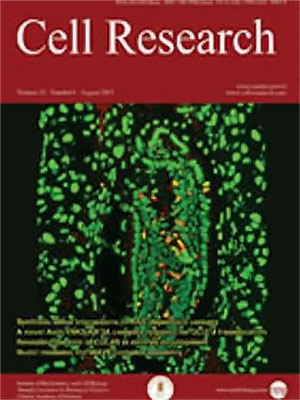
Volume 15, No 5, May 2005
ISSN: 1001-0602
EISSN: 1748-7838 2018
impact factor 17.848*
(Clarivate Analytics, 2019)
Volume 15 Issue 5, May 2005: 379-386
ORIGINAL ARTICLES
The role of Akt on Arsenic trioxide suppression of 3T3-L1 preadipocyte differentiation
Zhi Xin WANG1, Chun Sun JIANG1, Lei LIU1, Xiao Hui WANG1, Hai Jing JIN1, Qiao WU2, Quan CHEN1,*
1State Key Laboratory of Biomembrane and Membrane Biotechnology, Institute of Zoology, Chinese Academy of Sciences, Beijing 100080, China
2College of life Science, Xiamen University, Xiamen 361005, China
Correspondence: Quan CHEN(chenq@ioz.ac.cn)
The present study investigates the molecular details of how arsenic trioxide inhibits preadipocyte differentiation and examines the role of Akt/PKB in regulation of differentiation and apoptosis. Continual exposure of arsenic trioxide, at the clinic achievable dosage that does not induce apoptosis, suppressed 3T3-L1 cell differentiation into fat cells by inhibiting the expression of PPARγ and C/EBPα and disrupting the interaction between PPARγ and RXRα, which determines the programming of the adipogenic genes. Interestingly, if we treated the cells for 12 or 24 h and then withdrew arsenic trioxide, the cells were able to differentiate to the comparable levels of untreated cells as assayed by the activity of GAPDH, the biochemical marker of preadipocyte differentiation. Long term treatment blocked the differentiation and the activity of GAPDH could not recover to the comparable levels of untreated cells. Continual exposure of arsenic trioxide caused accumulation in G2/M phase and the accumulation of p21. We found that arsenic trioxide induced the expression and the phosphorylation of Akt/PKB and it inhibited the interaction between Akt/PKB and PPARγ . Akt/PKB inhibitor appears to block the arsenic trioxide suppression of differentiation. Our results suggested that Akt/PKB may play a role in suppression of apoptosis and negatively regulate preadipocyte differentiation.
FULL TEXT | PDF
Browse 1933


